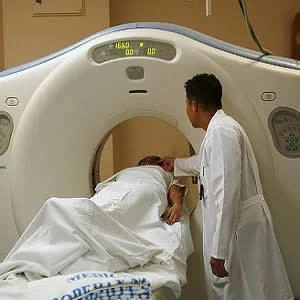CT-guided spinal procedures using CT fluoroscopy have become increasingly more popular because of its ease of localisation and visualisation of the targeted abnormality. However, growing utilisation and nonuniform protocols for CT guidance have brought about the need to reduce radiation exposure to the lowest adequate level while maintaining patient safety with good results. New research shows the "scout no scan technique" can significantly lower radiation exposure while maintaining high diagnostic yields for CT-guided spinal biopsies.
The scout no scan technique eliminates the step of performing traditional planning CT for target localisation. Several studies have found that the planning CT component of the procedure adds the most radiation exposure and have provided many ways to adjust parameters to decrease dose. One study reported eliminating the planning CT scan during epidural injections, which resulted in an 85% reduction in median dose-length product (DLP).
In the current study, researchers found that the scout no scan technique can reduce the mean DLP 88% for spinal biopsies. The DLP is the product of the CT dose index and scanning length (centimetres) and serves as a measure of the total amount of radiation used during a given CT examination.
The researchers performed a retrospective review of radiation exposure of all CT-guided spinal biopsies performed for six months from January 2015 through June 2015. In March 2015, the research team began using the scout no scan technique. This technique was progressively used with greater frequency for more complex procedures as the operators began to feel more comfortable with the technique. Radiation exposures were recorded for two groups: patients with a planning CT examination (group A) and patients with no planning CT examination (group B). All the biopsies were performed on the same CT scanner.
A total of 39 biopsies were performed using planning CT (group A), and 30 were performed using the scout no scan technique (group B). The mean age of the patients was 59.0 ± 14.4 (SD) years (age range, 18–84 years). All patients had undergone cross-sectional imaging before the procedure — most commonly CT, MRI, or PET/CT. No major procedure-related complications occurred while using the scout CT scan technique.
The mean DLP for group A was 233.00 mGy × cm and for group B, 27.64 mGy × cm. The mean CT dose index (CTDIvol) for group A was 70.49 mGy and for group B, 29.86 mGy.
According to the researchers, the z-axis coverage affects patient dose. In this study, the mean effective length of 3.96 cm for group A versus 1.17 cm for group B shows how the scout no scan technique addresses the impact of the z-axis. Furthermore, a 58% decrease in mean CTDIvol was found in this study when using the scout no scan technique.
"In addition to dose reduction, the diagnostic sampling rate in this study consistently resulted in a diagnostic rate of over 90% regardless of the CT technique used. Therefore, it can be argued that planning CT may not be necessary to effectively perform many percutaneous CT-guided spinal biopsies, particularly if prior cross-sectional imaging is available," the authors write.
With these findings, the researchers encourage interventionalists to make a conscious effort to lower radiation by trying to incorporate the scout no scan technique into practice.
Source: American Journal of Roentgenology
Latest Articles
radiation exposure, Dose-reduction technique, CT-guided spine biopsies, CT fluoroscopy
CT-guided spinal procedures using CT fluoroscopy have become increasingly more popular because of its ease of localisation and visualisation of the targeted abnormality. However, growing utilisation and nonuniform protocols for CT guidance have brought ab









